
A Glimpse into Firefighting History at the Historical Fire Station
Explore the Historical Fire Station in Münster, where the legacy of firefighting comes to life through unique exhibits and engaging stories.
Discover the Historical Fire Station in Münster, a captivating tourist attraction showcasing the evolution of firefighting equipment and techniques. Immerse yourself in the rich history while exploring unique exhibits that highlight the bravery and dedication of firefighters throughout the ages. A must-visit for history buffs and families alike!
A brief summary to Historisches Feuerwehrgerätehaus
- Theo-Breider-Weg 1, Münster, 48149, DE
- Visit website
Local tips
- Check the museum's schedule for special events or demonstrations for a more interactive experience.
- Visit during weekdays to avoid crowds and enjoy a quieter experience.
- Don't forget to explore the surrounding area, as Münster is rich in history and charm.
Getting There
-
Walking
If you are starting from the city center (Zentrum), head southwest towards the Aasee lake. Walk along the Promenade, which is a beautiful tree-lined path. Continue walking until you reach the Bismarckstraße intersection. Turn left onto Bismarckstraße and continue straight until you reach the next major intersection with Theo-Breider-Weg. Turn right onto Theo-Breider-Weg, and you will find the Historisches Feuerwehrgerätehaus at number 1 on your left.
-
Public Transport
From Münster Hauptbahnhof (the main train station), take bus line 10 towards 'Wolbeck' or bus line 14 towards 'Wolbeck'. Get off at the 'Hafenstraße' stop. From there, walk south towards Theo-Breider-Weg. Turn left onto Theo-Breider-Weg. The Historisches Feuerwehrgerätehaus will be located at number 1 on your right.
-
Cycling
If you prefer to cycle, you can rent a bike from one of the many rental services in the city. Head towards the Aasee and follow the bike paths along the lake. Continue towards the Promenade, and then follow the same route as outlined in the walking directions. Once you reach the intersection of Bismarckstraße and Theo-Breider-Weg, turn right onto Theo-Breider-Weg, and you'll find the Historisches Feuerwehrgerätehaus at number 1.
Discover more about Historisches Feuerwehrgerätehaus
Iconic landmarks you can’t miss
Historisches Feuerwehrgerätehaus
0.0 km
Explore the Historical Fire Station in Münster, where the legacy of firefighting comes to life through unique exhibits and engaging stories.

Stephanuskirchplatz
0.9 km
Explore the vibrant atmosphere of Stephanuskirchplatz, a charming town square in Münster-Aaseestadt, rich in culture and history.

Old Zoo Münster, Former Owl House
1.4 km
Discover the historical charm of the Old Zoo Münster and explore the Former Owl House, a captivating landmark reflecting Germany's zoological heritage.

Wasserturm
1.5 km
Discover the historical Wasserturm in Münster, a stunning architectural landmark that showcases the city's rich cultural heritage.

Ehrenmal Kürassierdenkmal
1.6 km
Explore the Ehrenmal Kürassierdenkmal, a poignant cultural landmark in Münster, reflecting on the bravery of the Kürassier regiment and the city's rich history.

Reste der ehemaligen Stadtmauer
1.6 km
Explore Münster's historic city wall remnants, a captivating journey through time and architecture in the heart of the city.

Münster für Frieden
1.7 km
Discover the serene beauty of Münster für Frieden, a state park where nature and tranquility unite in a peaceful retreat in Germany.

Marienplatz
2.0 km
Explore Marienplatz, Münster's vibrant town square, rich in history, surrounded by stunning architecture, shops, and delightful cafes.

Mariensäule
2.1 km
Explore Mariensäule, a stunning historical landmark in Münster, showcasing exquisite craftsmanship and rich cultural heritage in a vibrant city square.

Promenade, Münster
2.1 km
Discover the historical charm of Promenade in Münster, a beautiful landmark blending culture, art, and nature for an unforgettable experience.

Picassoplatz
2.1 km
Explore the lively Picassoplatz in Münster, where history meets modern charm in a vibrant town square filled with cafés and art.

Bronzemodell des Schlosses und der Innenstadt
2.1 km
Explore the stunning Bronze Model of Münster Castle and City Center, a unique artistic representation showcasing the city's rich history and architectural beauty.
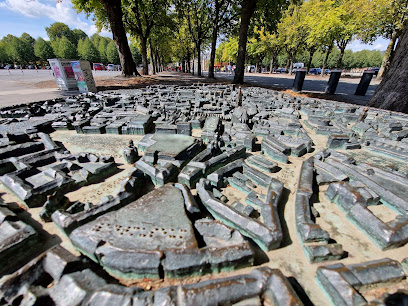
Wilsberg-Krimi
2.2 km
Explore Wilsberg-Krimi in Münster, where the charm of the city meets the intrigue of detective fiction for an unforgettable experience.

Bronzemodell der Nachkriegsinnenstadt
2.2 km
Discover the Bronze Model of Münster's Post-War City Center, a captivating sculpture that tells the story of resilience and renewal in the heart of the city.

Domplatz
2.3 km
Explore the vibrant Domplatz in Münster, where history meets modernity in a lively town square full of culture, cafes, and community events.

Unmissable attractions to see
Bockwindmühle
0.0 km
Discover the beauty and history of Bockwindmühle, a charming windmill in Münster showcasing agricultural heritage and scenic views.

Glockenturm
0.1 km
Discover the Glockenturm in Münster, a historical bell tower that offers breathtaking views and a glimpse into the city's rich architectural heritage.

Fachwerkschuppen & Wagenremise
0.1 km
Explore the rich heritage of Münster at Fachwerkschuppen & Wagenremise, a charming tourist attraction with stunning half-timbered architecture and engaging exhibits.

Göpel
0.1 km
Explore Göpel in Münster for a unique blend of history, nature, and local culture that captivates every traveler.

Gräftenhof
0.1 km
Explore Gräftenhof, a unique tourist attraction in Münster, where tradition meets education in a serene agricultural setting.

Backhütte
0.1 km
Discover the art of traditional baking at Backhütte in Münster, where culinary heritage and rustic charm come together for an unforgettable experience.

Freilichtmuseum Mühlenhof in Münster
0.1 km
Explore the vibrant history of Münster at Freilichtmuseum Mühlenhof, an engaging open-air museum showcasing traditional buildings and culture.

Torhaus, Eingang/Kasse, Museumsladen
0.1 km
Discover the charm of the Torhaus, a historic gateway to Münster's Mühlenhof Open-Air Museum, showcasing Germany's rich cultural and agricultural heritage.

Gräftenhof Speicher/ Kornspeicher
0.1 km
Explore Muenster's agricultural heritage at Gräftenhof Speicher, a historic granary showcasing traditional farming practices and rich cultural history.

Bleichhütte
0.1 km
Explore Bleichhütte in Münster - a serene tourist attraction blending natural beauty with rich cultural heritage.

Baumberger sandsteinhaus
0.1 km
Discover the architectural marvel of Baumberger Sandsteinhaus in Münster, showcasing rich history and stunning sandstone craftsmanship.

Aasee
0.6 km
Discover the serene beauty of Aasee, a tranquil lake in Münster, perfect for leisurely strolls, outdoor activities, and local events.

LWL Museum of Natural History with Planetarium
0.6 km
Discover the LWL Museum of Natural History with Planetarium, a captivating destination for nature lovers and astronomy enthusiasts in Münster.
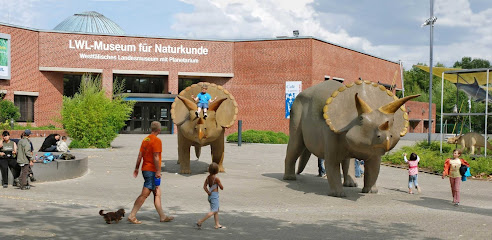
Allwetterzoo Münster
0.7 km
Explore the enchanting Allwetterzoo Münster, where wildlife meets education in a stunning all-weather environment for families and nature lovers.

Elefantengehege
0.8 km
Explore Elefantengehege: A captivating elephant sanctuary in Münster offering educational experiences and up-close encounters with these gentle giants.

Essential places to dine
Restaurant Zum Himmelreich - Münster
1.2 km
Discover authentic German flavors at Restaurant Zum Himmelreich in Münster’s enchanting beer garden.
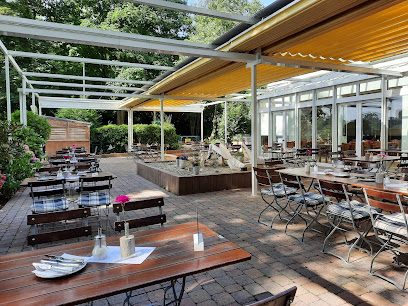
Orléans
1.4 km
Discover authentic French cuisine at Orléans in Münster - where culinary passion meets delightful dining.

481 Pizzamanufaktur
1.8 km
Discover the taste of Italy at 481 Pizzamanufaktur in Münster – where authentic pizza meets high-quality ingredients.

Restaurant Kleine Welt
1.9 km
Experience authentic German cuisine at Restaurant Kleine Welt in Münster - where traditional flavors meet contemporary dining.

Restaurant Spitzner
2.0 km
Experience fine dining like never before at Restaurant Spitzner in Münster, where exquisite cuisine meets elegant ambiance.

Krawummel - different dining
2.0 km
Savor delicious vegan Western cuisine at Krawummel in Münster – where flavor meets sustainability in every bite!

LUX | Barkultur • Grillkunst • Restaurant
2.1 km
Experience exceptional grill culture at LUX in Münster, where culinary artistry meets vibrant atmosphere for an unforgettable dining adventure.
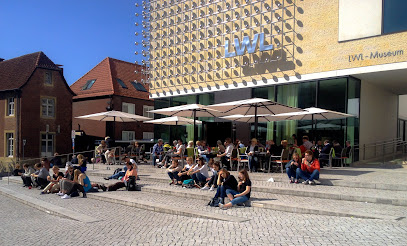
Ristorante Fiu
2.1 km
Experience authentic Italian cuisine at Ristorante Fiu in Münster – where every meal is a celebration of flavor and tradition.
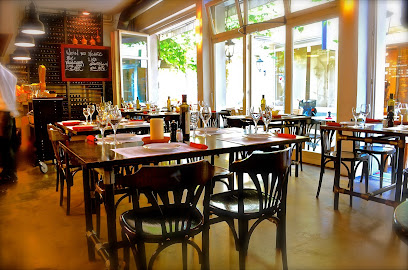
Caputo's
2.1 km
Experience authentic Italian flavors at Caputo's in Münster, where culinary excellence meets vibrant café culture.

Chay Chay by royals & rice
2.1 km
Discover authentic Vietnamese cuisine at Chay Chay in Münster – where tradition meets modern dining.

Gaststätte Töddenhoek
2.2 km
Discover authentic German flavors at Gaststätte Töddenhoek in Münster – where tradition meets taste in every dish.

Fegefeuer
2.2 km
Discover the exquisite flavors of Münster at Fegefeuer, where every dish tells a story of local tradition and culinary excellence.

Kleines Brauhaus
2.2 km
Discover the essence of German cuisine at Kleines Brauhaus in Münster - authentic dishes paired with exquisite local brews.

L'Osteria Münster
2.3 km
Discover authentic Italian cuisine at L'Osteria Münster with delicious pizzas and pastas served in a warm and inviting atmosphere.

Gaststätte Pinkus Müller
2.3 km
Experience authentic Western cuisine at Gaststätte Pinkus Müller in Münster - where tradition meets flavor in a cozy setting.

Markets, malls and hidden boutiques
Villa Sophie Label Store Münster
1.9 km
Explore fashion at Villa Sophie in Münster, where trendy clothing meets timeless style in a charming shopping atmosphere.
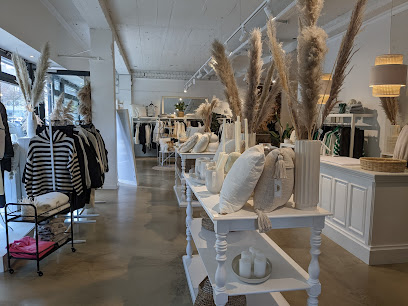
Homebeis
2.0 km
Discover unique gifts and enjoy artisanal treats at Homebeis, the charming boutique and café in Münster that embodies local spirit.
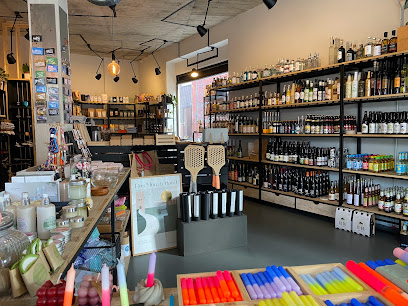
LOVE STORY
2.1 km
Discover unique fashion finds and charming accessories at LOVE STORY Boutique in Münster, a must-visit for style enthusiasts and casual shoppers alike.
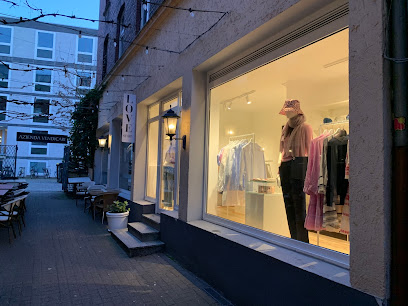
BUTLERS@home24 Münster Ludgeristraße
2.1 km
Explore BUTLERS@home24 in Münster for unique gifts, stylish home decor, and chic furniture, perfect for every décor enthusiast and souvenir seeker.

Schwarzmarkt
2.1 km
Explore unique fashion at Schwarzmarkt, a vibrant clothing store in Münster, blending contemporary styles with local craftsmanship.

L'Occitane - Münster
2.1 km
Explore L'Occitane in Münster for natural beauty products and unique gifts inspired by the enchanting landscapes of Provence.

Königspassage
2.1 km
Discover the charm of Königspassage, Münster's premier shopping destination, featuring diverse stores and dining options in a vibrant atmosphere.
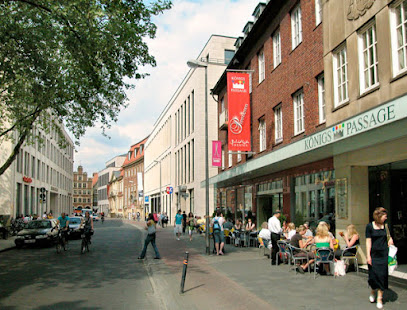
Münster Arkaden
2.1 km
Experience the vibrant shopping scene at Münster Arkaden, where local charm meets global brands in a stunning setting.

dein kreativregal
2.1 km
Explore dein kreativregal in Münster for unique handmade gifts and local crafts that capture the city's artistic spirit.

Luftschloss
2.1 km
Explore Luftschloss in Münster for unique gifts and local crafts that capture the essence of your travels in Germany.

Zalando Outlet Store Münster
2.1 km
Explore the Zalando Outlet Store Münster for unbeatable fashion deals and a diverse selection of clothing, shoes, and accessories in a vibrant atmosphere.

Søstrene Grene
2.2 km
Explore Søstrene Grene in Münster for a unique blend of home goods, art supplies, and creative inspirations in a charming shopping atmosphere.

Creole-Schmuckwaren
2.2 km
Explore exquisite handcrafted jewelry and unique body piercings at Creole-Schmuckwaren, a hidden gem in Münster's vibrant shopping scene.

Manufactum Warenhaus
2.2 km
Explore sustainable craftsmanship at Manufactum Warenhaus in Münster, where quality gifts and home goods await every discerning traveler.
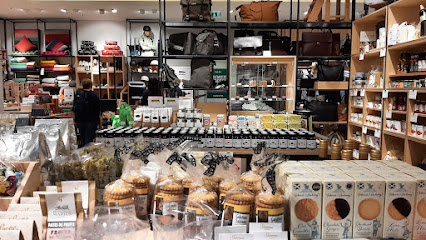
SC Preußen Münster Fanshop Arkaden
2.2 km
Discover the heart of SC Preußen Münster with exclusive merchandise and memorabilia at the Fanshop Arkaden, a haven for football enthusiasts.

Essential bars & hidden hideouts
Dock Bar
1.7 km
Experience the vibrant nightlife of Münster at Dock Bar, where craft beers and cocktails meet a cozy gastropub atmosphere.

Das Piano
2.1 km
Experience the vibrant atmosphere of Das Piano, an Irish pub in Münster offering live music, great food, and a unique gastropub experience.

Peacock
2.2 km
Discover Peacock, Münster's stylish cocktail bar offering exquisite drinks and a vibrant atmosphere for unforgettable nights out.
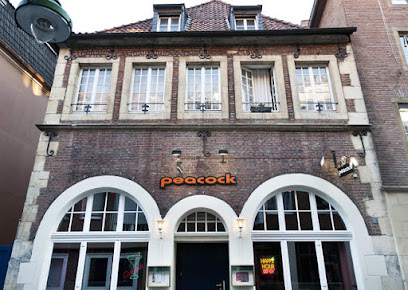
Destille
2.2 km
Experience the vibrant nightlife of Münster at Destille, where exceptional drinks and a lively atmosphere await you.

Gorilla Bar
2.2 km
Experience the lively atmosphere and vibrant live music at Gorilla Bar, a must-visit destination in Münster for drinks and entertainment.

Barzillus - Münster
2.2 km
Experience the vibrant nightlife of Münster at Barzillus, a cozy pub with a rich selection of drinks and hearty snacks in a warm atmosphere.
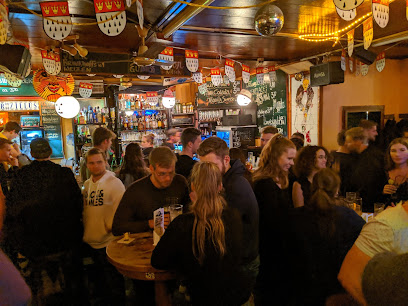
Whisky Dungeon
2.2 km
Explore a world of whiskies at Whisky Dungeon, Münster's premier bar for connoisseurs and curious newcomers alike.

Davidwache
2.2 km
Experience the lively nightlife of Münster at Davidwache, where great drinks and vibrant atmosphere come together for an unforgettable evening.

Mokel Bar
2.2 km
Experience the vibrant atmosphere of Mokel Bar in Münster, offering a blend of ambiance, delicious drinks, and local flavor for every tourist.

UESLI BAR - Münster
2.3 km
Discover UESLI BAR in Münster – a lively hub for drinks, socializing, and unforgettable nightlife experiences.

Alter Ego - Münster
2.4 km
Experience the vibrant nightlife of Münster at Alter Ego, a bar known for its eclectic drinks and welcoming atmosphere.

Bullenkopp
2.5 km
Discover Bullenkopp, a vibrant pub in Münster with a welcoming atmosphere, diverse drinks, and a glimpse into local nightlife.

Atelier
2.6 km
Discover the vibrant nightlife at Atelier Bar in Münster, where eclectic drinks and a lively atmosphere await you every night.

Haifischbar - Münster
2.7 km
Discover Haifischbar in Münster, a lively sports bar with a surf culture twist, offering a wide selection of beers and cocktails in a vibrant atmosphere.

balthazar bar
2.7 km
Experience the vibrant atmosphere and exquisite cocktails at Balthazar Bar in Münster, where every drink tells a story.




